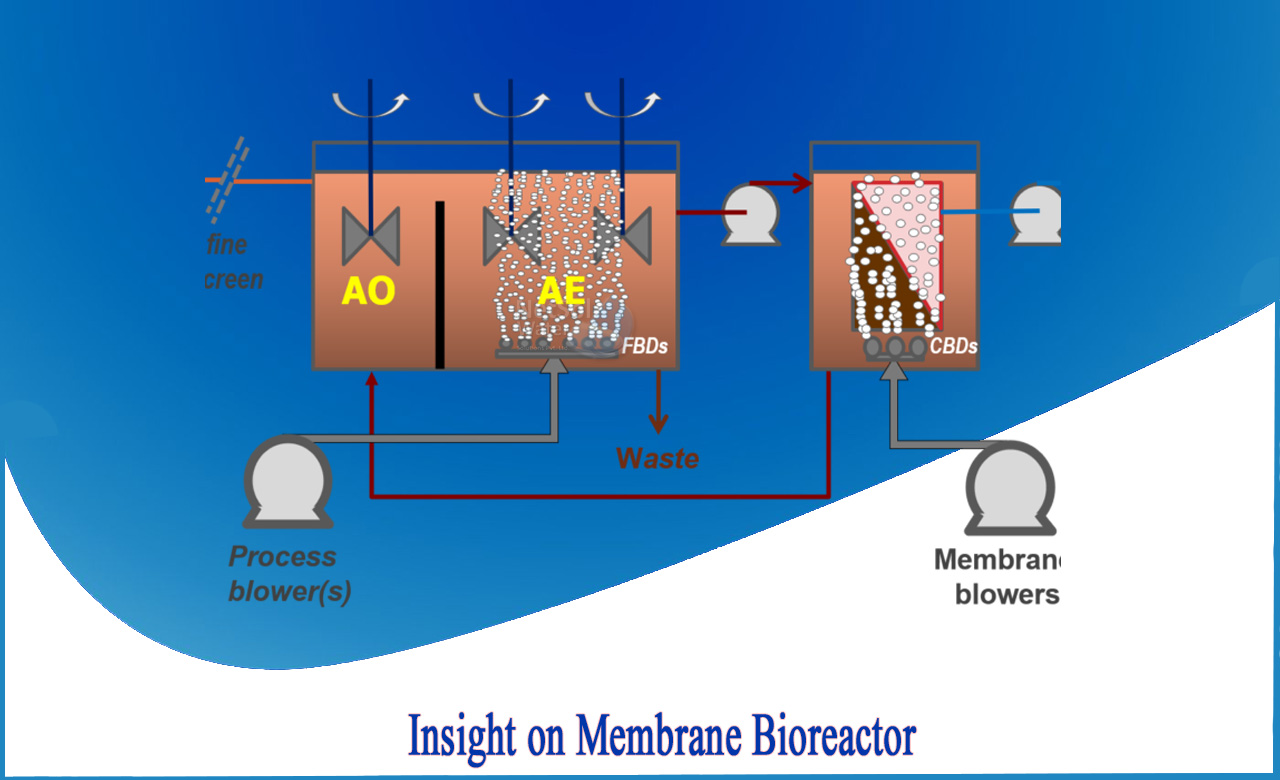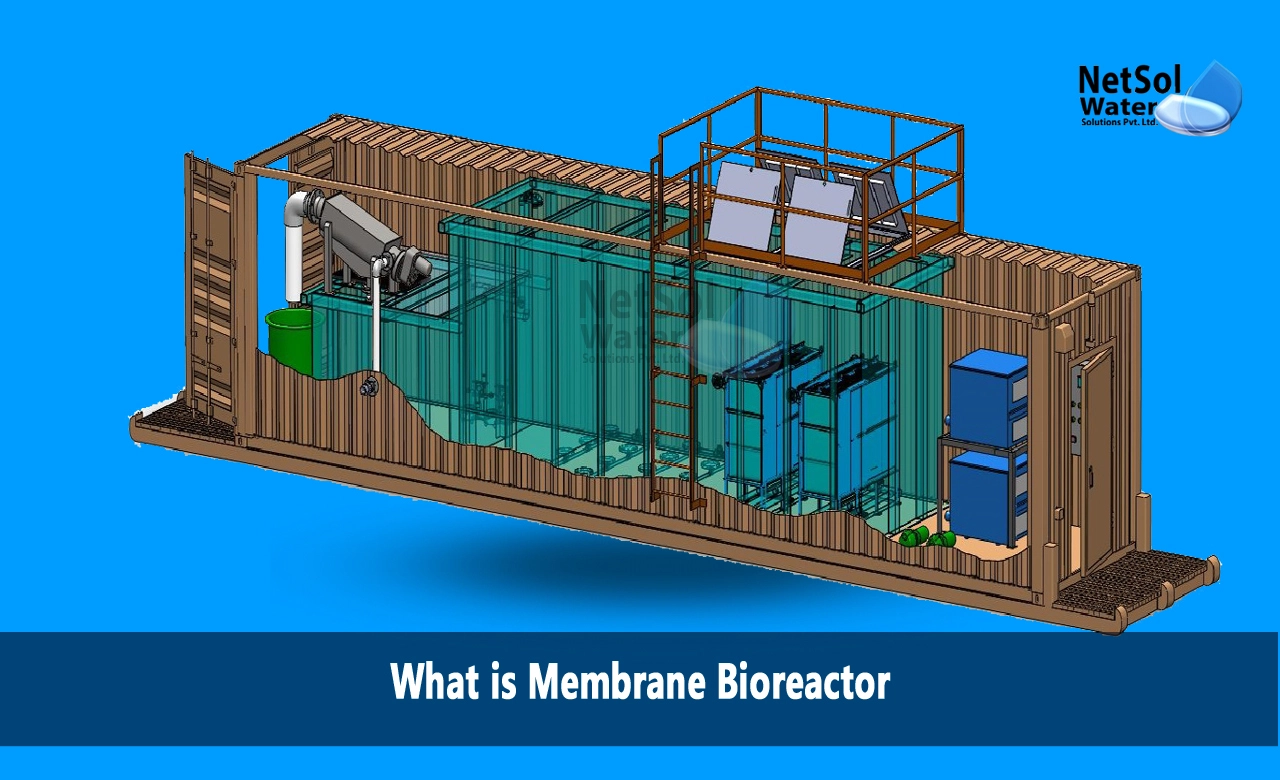Understanding the Basics of Membrane Bioreactor Systems for Wastewater Management
Understanding the Basics of Membrane Bioreactor Systems for Wastewater Management
Blog Article
Exactly How Membrane Layer Bioreactors Are Revolutionizing Water Filtration Systems
The introduction of membrane layer bioreactors (MBRs) represents a substantial innovation in the field of water filtration, combining biological treatment procedures with sophisticated membrane purification innovations. As global water shortage increases, the role of MBRs in assisting in potable water reuse and sustainable water administration comes to be increasingly crucial.
Summary of Membrane Layer Bioreactors
Membrane layer bioreactors (MBRs) stand for a considerable innovation in water filtration modern technology, as they integrate biological treatment procedures with membrane filtration. This integration enhances the effectiveness of wastewater treatment by making use of microbes to deteriorate organic contaminants while at the same time using semi-permeable membrane layers to different treated water from put on hold microorganisms and solids.
The MBR system commonly consists of a biological activator where the microbial populace metabolizes impurities, followed by a membrane layer filtration system that keeps biomass and enables just tidy water to travel through. This dual capability leads to higher effluent high quality contrasted to traditional treatment techniques. MBRs can be run in both batch and constant flow modes, supplying versatility in style and application.
Additionally, MBRs are characterized by their portable impact, making them appropriate for metropolitan setups with room restraints. Membrane Bioreactor. They likewise make it possible for the recovery of water for reuse, hence adding to water sustainability efforts. While MBR technology has acquired popularity in commercial and municipal applications, its operational intricacies and power demands demand cautious consideration during implementation. Generally, MBRs go to the leading edge of boosting water therapy performance and top quality, showcasing the potential for ingenious services in environmental management.
Benefits of MBR Innovation
The integration of organic therapy with membrane filtration offers numerous benefits for water purification processes. Among the main benefits of Membrane Bioreactor (MBR) technology is its capability to properly eliminate both organic and inorganic contaminants, leading to top quality effluent. The membrane layers function as a physical barrier, stopping put on hold solids and virus from travelling through, which boosts the general safety and security and reliability of treated water.
Furthermore, MBR systems require a smaller sized impact contrasted to standard treatment methods, permitting more effective space usage. This compact style is specifically beneficial in city settings where land is limited. MBRs additionally show functional flexibility, fitting differing influent top qualities and circulation rates without significant performance destruction.
Moreover, the process uses improved nutrient elimination abilities, especially for nitrogen and phosphorus, which are essential for avoiding eutrophication in getting waters. The lowered sludge production related to MBR technology additionally translates to reduce disposal prices, making it an economical remedy over time - Membrane Bioreactor. Overall, the benefits of MBR innovation placement it as a leading selection for sustainable and cutting-edge water filtration systems, dealing with both environmental and economic issues
Applications in Water Purification
Applications of Membrane Bioreactor (MBR) innovation in water filtration are impactful and diverse, dealing with numerous treatment needs throughout several fields. MBRs effectively integrate organic treatment procedures with membrane filtering, making them ideal for local wastewater therapy, industrial effluent administration, and also drinkable water reuse campaigns.
In municipal settings, MBRs are progressively employed to improve the top quality of dealt with wastewater, enabling for conformity with rigid discharge laws and assisting in the recycling of water for irrigation and non-potable uses. Their compact style also makes them appropriate for metropolitan settings where room is limited.
Industrially, MBR technology is made this article use of to deal with procedure water and wastewater, particularly in sectors such as food and beverage, pharmaceuticals, and fabrics. By efficiently getting rid of impurities and suspended solids, MBRs aid sectors decrease ecological impacts while recuperating valuable resources from wastewater streams.
In site link Addition, MBRs are gaining grip in decentralized water therapy applications, where small systems can be deployed in remote areas or establishing regions. This adaptability enables neighborhoods to accomplish lasting water management remedies, boosting accessibility to tidy water while minimizing dependence on standard treatment approaches.
Study and Success Stories

In an additional example, a fabric production center in Bangladesh took on MBR innovation to address its wastewater difficulties. The system minimized chemical oxygen demand (COD) levels from 1,200 mg/L to much less than 100 mg/L, thus fulfilling regulatory standards and dramatically reducing ecological influence.
The College of Cape Community's MBR setup has actually proven effective in dealing with greywater for non-potable reuse on university. This task not just saves drinkable water yet additionally functions as an academic design for lasting practices.
Additionally, a seafood handling plant in Norway made use of MBR modern technology to deal with effluents containing high degrees of raw material, attaining over 90% toxin removal. These study emphasize MBR technology's convenience and its essential function in improving water top navigate to this website quality throughout diverse applications.
Future of Water Therapy Solutions
As international water shortage and pollution obstacles heighten, innovative water treatment services are coming to be increasingly necessary to make sure lasting accessibility to clean water. The future of water treatment exists in the integration of sophisticated modern technologies that boost the effectiveness and performance of purification processes. Membrane layer bioreactors (MBRs) are at the forefront of this development, incorporating biological therapy with membrane filtering to produce high-quality effluent suitable for numerous applications.

Emerging fads such as resource healing from wastewater, consisting of nutrients and power, will certainly additionally change treatment centers right into green hubs. Innovations in nanotechnology and membrane layer materials guarantee enhanced performance and long life of filtering systems.

Final Thought
In verdict, membrane bioreactors stand for a significant advancement in water filtration modern technologies, properly combining organic treatment with sophisticated membrane filtering. The numerous benefits, including boosted effluent top quality and lowered spatial needs, make MBRs especially appropriate for metropolitan applications. Their role in potable water reuse and lasting water monitoring highlights their importance in attending to global water deficiency obstacles. Proceeded r & d will further improve the efficiency and fostering of MBR modern technology, making sure a durable future for water treatment solutions.
The appearance of membrane layer bioreactors (MBRs) stands for a considerable innovation in the area of water filtration, merging biological treatment processes with advanced membrane layer filtration technologies. As international water deficiency escalates, the function of MBRs in assisting in drinkable water reuse and lasting water management ends up being progressively essential. They likewise make it possible for the recovery of water for reuse, therefore contributing to water sustainability initiatives.As global water deficiency and air pollution challenges escalate, innovative water treatment solutions are ending up being increasingly necessary to guarantee sustainable accessibility to clean water. Their duty in potable water reuse and sustainable water monitoring highlights their importance in attending to international water scarcity challenges.
Report this page